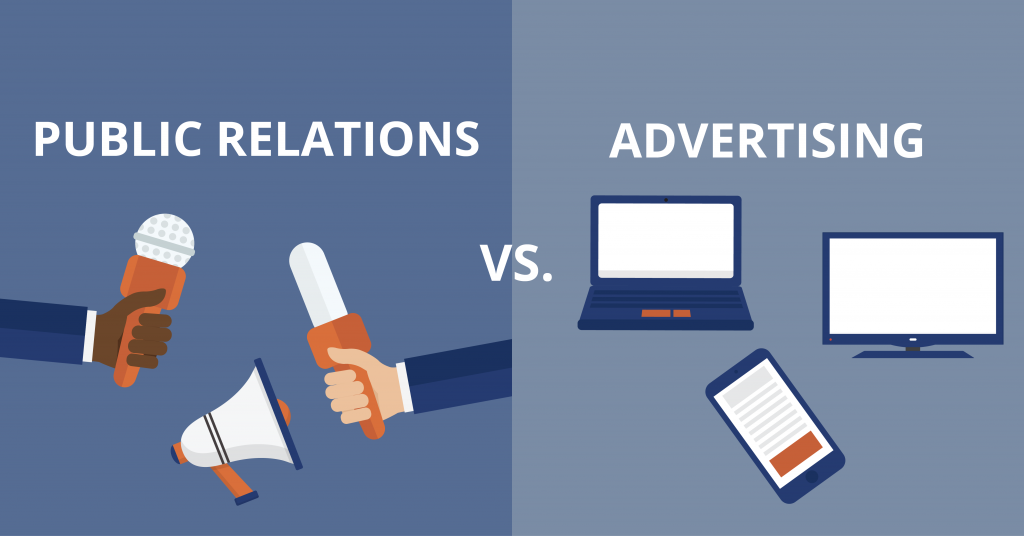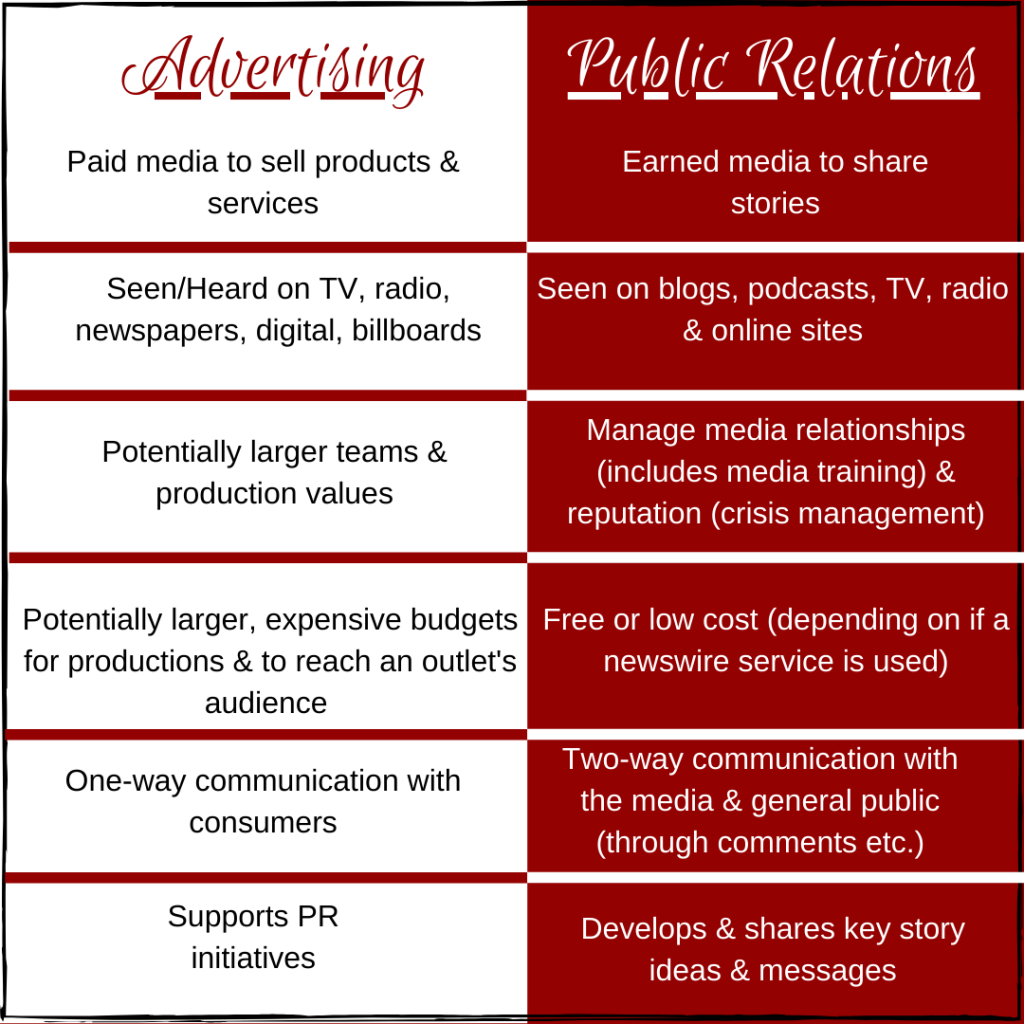
If you’re following me on Instagram (it’s @LSue30, by the way), you might notice that I’ve recently launched a section known as Publicity Talks. Publicity Talks is where I’ll be sharing videos, audio clips/interviews, quotes, blog posts & tips about everything related to public and media relations, including campaigns.
If you’ve seen the first segment I uploaded into Publicity Talks on Instagram, it’s just Part 1 of a talk I recently did with Brittney Ashley, CEO of Creative Dynamics Virtual Assistants and a moderator of the Canadian Community for Small Businesses Facebook Group. The entire conversation focuses on public relations and tips that I’d recommend to small businesses and solopreneurs, including the importance of crisis communications.
The first segment focused on what the definitions of advertising and public relations are-and how they work hand-in-hand together. In case you missed it, or find it easier to read about it, here it is, in blog form!
So, what are the differences between advertising and public relations? PR is the art of managing public perceptions while building key relationships through strategic communication with consumers and managing brand reputations through the media. How do you build that strategic communication strategy? By developing key story ideas that resonate with your audience. What kind of story ideas? They could be focused on new products you’re launching, new services, a new event (or series of events), partnership or even new features that you’re launching.
Where can you share these story ideas? You could send them out through your dedicated email list in a newsletter, on your blog and through your social media channels. Public relations isn’t just about getting the word out about something new and exciting though the media, it’s about getting the word out-however you can, in a way that still includes the media.
You can share these story ideas with the media too, through story pitching & through their social media channels to achieve earned media coverage. What’s earned media coverage? In a nutshell, it’s any press coverage that you receive (ie. mentions, reviews, interviews) on a wide variety of platforms, from online sites and newspapers to podcasts and blogs-that you DID NOT pay for. Any and all coverage you receive is because the media personality, the journalist, the podcasters etc. are genuinely interested in what you’re doing and how you’re doing it.
Media relations and reputation management are also a big part of PR. Media relations is about managing the expectations & relationships with the media, with everything from how you schedule interviews to how/where you supply them with your media kit (more on that in part 2). It’s also learning how to talk to the media and to become more confident in interviews, whether they’re on-camera or not.
Reputation management, is a huge part of PR and marketing strategy (which I’ll cover more in-depth in part 3 of this particular Publicity Talks segment). It’s less about sharing new stories with your audience & the media and more about building a framework on how your brand wants to be perceived on and offline-and how to manage said framework in terms of crisis. It’s vital that each brand have a framework in place of how they want to communicate online and to manage that, accordingly. Having that framework in place will make it easier to help a brand build a crisis communications response plan in preparation for a crisis.
Advertising, on the other hand, is creating paid campaigns to market products/services to consumers. These paid multi-channel campaigns can frequently be seen on billboards, television and radio ads, print advertising in newspapers, Facebook, Instagram and Twitter ads and even sponsored posts and articles in publications such as Forbes. With paid campaigns, brands work with an outlet’s sales team (or in the case of smaller publications or podcasts, the person in charge) to develop the graphics, the copy and the video footage (if it’s a television ad).
In some cases, these campaigns can require a pretty large team to set them up, particularly with video. For TV, radio, billboards, print ads and even in hosted podcast ads, brands need larger budgets that can be negotiated. These budgets go towards the production of the ads and as part of the price to reach their audiences. In the case of digital advertising and sponsored articles, while the budgets can be smaller, brands still need to research how to manage a campaign properly. In the case of sponsored posts, brands will still need to work with a journalist to develop articles that reflect their key messages.
Does this help you separate advertising from public relations? Hopefully the graphic below will clear up any questions. Please contact me if you have any questions and follow me on Twitter @LSue23 and on Instagram @lsue30 for the latest on marketing, social strategy & public relations.


